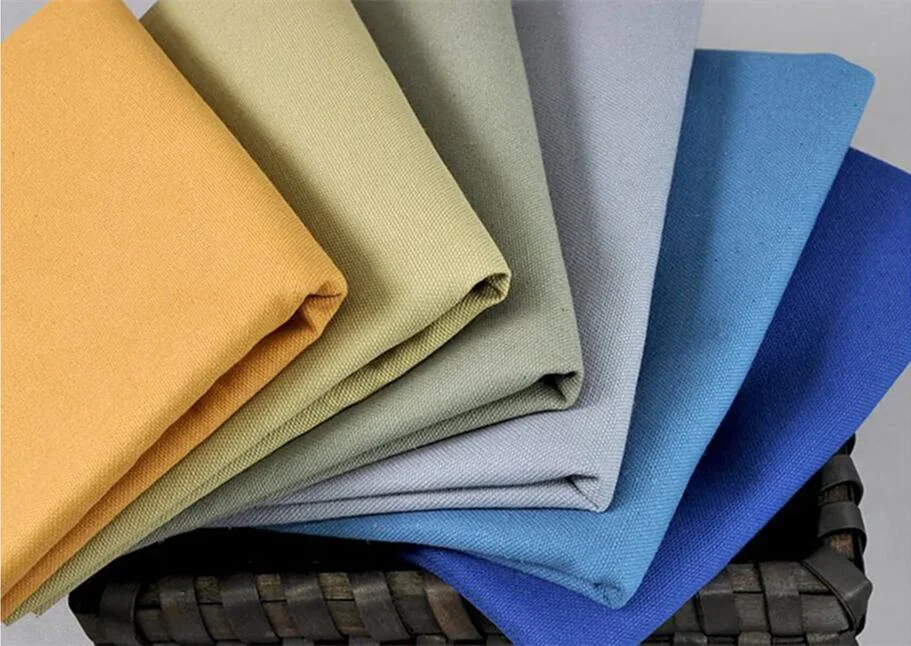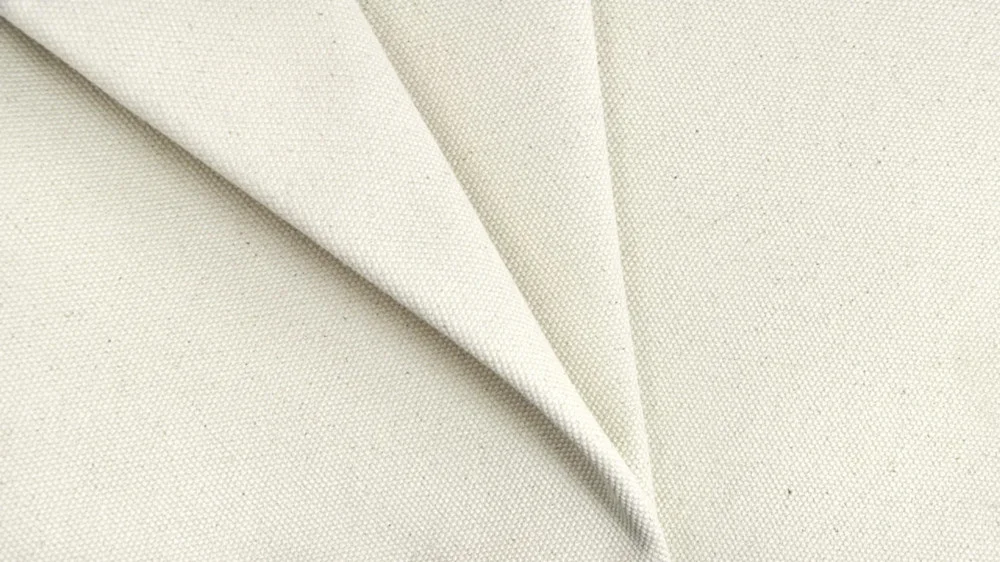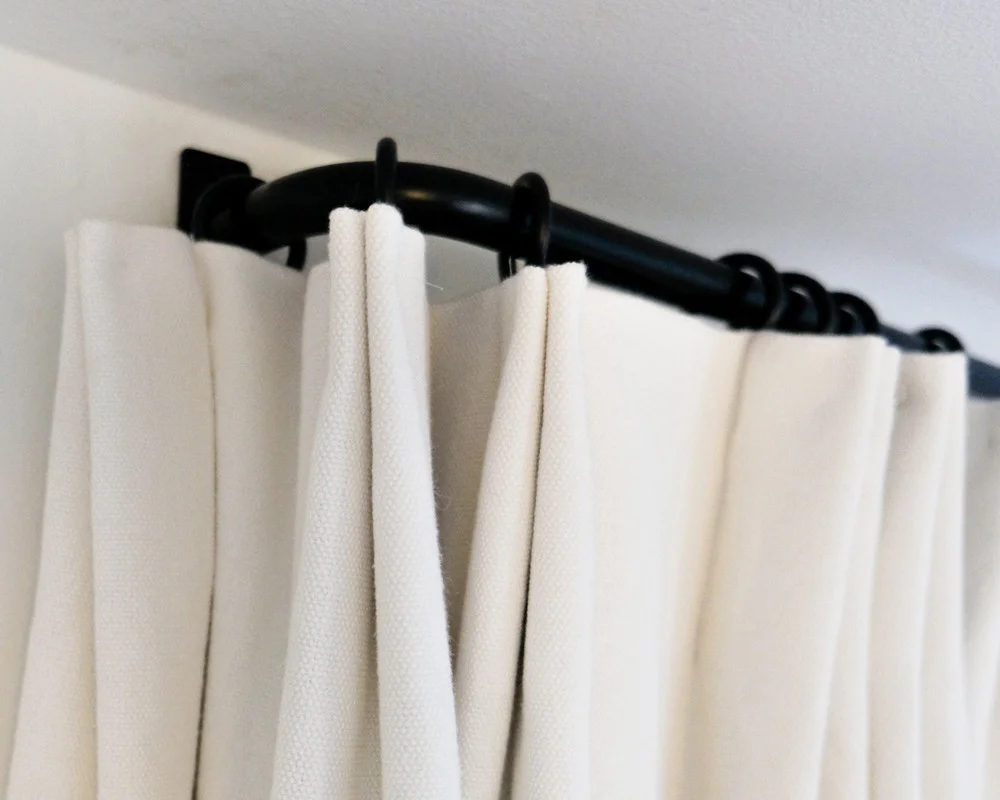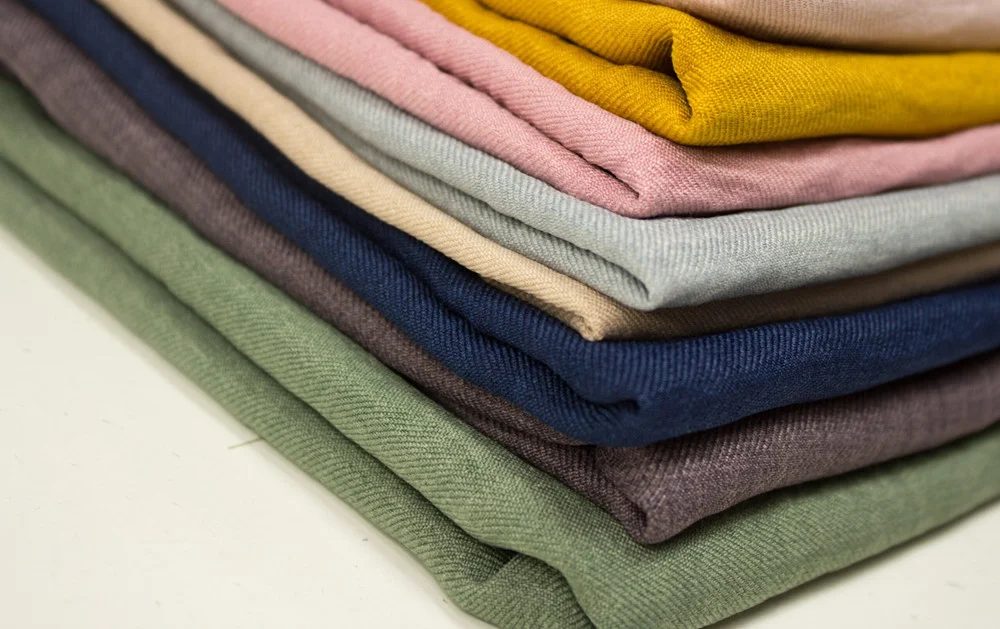Duck fabric is a tough, heavy-duty textile that’s often confused with canvas, thanks to its similar texture and strength. It’s a plain-woven fabric, usually made from cotton, although some versions may feature synthetic blends. The name “duck” actually comes from the Dutch word doek, which simply means cloth. Originally designed for sails, today it’s found in everything from workwear and upholstery to outdoor gear and home décor.
Dating back to the 17th century, Duck fabric has a rich history and has evolved into one of the most versatile fabrics around. Whether you’re making durable bags, tents, or simply upgrading your home décor, Duck fabric is a solid choice. Intrigued by its unique qualities and uses? Let’s dive deeper into what makes Duck fabric such a staple in the textile world!
Key Properties of Duck Fabric

Durability and Strength
What makes Duck fabric so popular? It’s its toughness! Duck fabric is designed to withstand wear and tear, which makes it ideal for high-use items like tents, bags, and upholstery. Its tightly woven structure helps resist snags and abrasions, giving it a long life. It’s often considered as durable as leather, which is why it’s used for demanding workwear.
Weight and Thickness
Duck fabric comes in a range of weights. Lightweight Duck is soft and flexible, perfect for bags or aprons. On the other hand, heavyweight Duck fabric is much thicker and stiffer, making it great for tents, outdoor gear, or upholstery. The thickness is measured in ounces per yard, so the heavier the fabric, the more durable it is for tough outdoor use.
Texture and Feel
Duck fabric feels a bit rougher than cotton but smoother than denim. It has a slightly stiff texture when you first get it, but after a few washes, it softens up nicely. This gives Duck fabric a rugged charm, making it an excellent choice for projects that require durability without compromising too much on comfort.
Water Resistance
Another key feature of Duck fabric is its water resistance. While it’s not entirely waterproof, it can handle light moisture, making it great for outdoor gear like backpacks, tarps, or tents. The fabric’s tight weave helps to repel water, ensuring your belongings stay dry in light rain or damp conditions.
Breathability and Comfort
Duck fabric’s breathability depends on its weight. Lighter versions are more breathable and comfortable for warmer weather, while the heavier versions offer more protection and wind resistance, but are less breathable. If you’re using it for upholstery, a medium-weight Duck fabric is a great option to strike the right balance between comfort and durability.
Types of Duck Fabric
Duck fabric is one of those versatile textiles that can handle a variety of projects. Whether you’re creating something sturdy for the outdoors or tackling a DIY craft project, understanding the different types of Duck fabric will help you choose the right one for your needs.

Cotton Duck
Cotton Duck fabric is made from 100% cotton, which makes it an eco-friendly option that’s both durable and breathable. It’s known for its smooth surface and tight weave, which gives it strength without sacrificing comfort. This fabric is naturally resistant to mildew, making it perfect for outdoor use. Plus, it’s biodegradable, which is great if you’re looking to be environmentally conscious in your project.
Common Uses:
Cotton Duck is super popular for home décor, like slipcovers, cushions, and even upholstery. It’s also a go-to for outdoor gear such as picnic blankets, patio cushions, and outdoor furniture covers. If you’re working on workwear, bags, aprons, or totes, this fabric can handle it all, with style and durability to match!
Synthetic Duck
If you’re looking for a fabric that offers more water resistance and durability, synthetic Duck fabric (usually made from polyester or nylon) is the way to go. Unlike cotton, synthetic Duck won’t soak up water, so it keeps its shape even in rainy conditions. It’s also more resistant to fading from the sun, making it the ideal choice for gear that’s constantly exposed to the elements.
Common Uses:
Synthetic Duck fabric is commonly used for outdoor gear like tents, tarps, backpacks, and duffel bags. It’s also a favorite for sports equipment because it can handle tough conditions and won’t let you down. If you need something that’s both tough and weatherproof, this fabric will get the job done.
Blended Duck Fabrics
Blended Duck fabrics combine the natural softness and breathability of cotton with the durability and wrinkle resistance of synthetic fibers. These fabrics give you the best of both worlds, offering a balance of comfort and toughness. Plus, they can be made to be stretchable or more water-resistant depending on how the fibers are blended.
Benefits of Blends:
Blended Duck fabrics are perfect if you want a fabric that’s both strong and easy to care for. The combination of cotton and synthetic fibers makes it less prone to tearing and damage compared to pure cotton Duck. These blends also handle shrinking and fading better, so they’re easier to maintain over time.
Common Uses:
You’ll find Blended Duck fabrics in workwear, upholstery, outdoor gear, and bags. Their blend of comfort, durability, and low maintenance makes them a favorite in a wide range of applications, from fashion to function. Industries like automotive and outdoor sports often prefer these fabrics for their strength and flexibility.
How Is Duck Fabric Made?
Yarn Production and Weaving
Duck fabric begins with yarn. Unlike cotton fabrics that focus on softness, Duck fabric uses a thicker, sturdier yarn. This yarn typically comes from cotton but can also be made from linen or hemp fibers. It’s carded (instead of combed), which helps create that rough, durable texture we love.
Duck fabric is woven in two ways: plain weave and twill weave. The plain weave is the simplest, where horizontal threads (weft) go under and over the vertical threads (warp) in an alternating pattern. This creates a tight, sturdy fabric perfect for heavy-duty use.
The twill weave forms a diagonal pattern, giving Duck fabric more flexibility and texture. This method is great for durable, softer fabrics like heavy-duty upholstery or outdoor gear. Both weaves offer unique qualities depending on your project.
Finishing Processes
After weaving, Duck fabric goes through finishing processes that give it its signature qualities, like water resistance or fire resistance.
One common finish is waterproofing, where a special coating makes the fabric resistant to water. This makes Duck fabric a great choice for outdoor gear, tents, and rain jackets. Some finishes make the fabric fire-resistant, adding another layer of versatility.
The finish also affects the fabric’s feel. Some finishes make Duck fabric soft to the touch, while others leave it with a crisp, structured finish. The choice depends on how you plan to use the fabric, so consider it carefully.
Dyeing and Printing
Duck fabric offers versatility in color thanks to its dyeing and printing options. Reactive dyes are commonly used, bonding strongly with fibers to keep colors vibrant for a long time. This is perfect for fabrics that need to hold their color, like outdoor gear or custom quilts.
For printing, screen printing is popular, where ink is pressed through a mesh screen to create patterns. Digital printing uses advanced technology to print intricate designs directly onto the fabric. Both methods offer endless possibilities for customizing Duck fabric projects.
Advantages of Duck Fabric
Strength and Durability: Built to Last
The biggest reason people love Duck fabric is its strength and durability. This fabric is perfect for heavy-duty projects, and it’s easy to see why. The thick, tightly woven fibers give Duck fabric a solid structure, making it tough enough to handle all kinds of wear and tear. Whether you’re crafting workwear, bags, or upholstery, Duck fabric can take on the challenge.
Compared to other fabrics, Duck fabric is a powerhouse. It holds up over time without losing its strength, unlike thinner materials that wear down more quickly. If you need something that will stand the test of time, Duck fabric is your go-to. It’s tough enough for the rough stuff, and it just keeps going.
Cost-Effectiveness: Great Value for Your Money
Duck fabric offers excellent value for the price. Even though it’s a heavy-duty material, it doesn’t carry the high price tag of some other durable fabrics like canvas or leather. For projects like outdoor gear or industrial work, Duck fabric is a more affordable choice without compromising on quality.
And if you’re buying in bulk for a big project or for industrial purposes, Duck fabric really shines. It’s cost-effective and gives you great quality without the hefty price. Plus, since it’s so durable, you won’t need to replace items as often, which means savings in the long run.
Eco-Friendly and Sustainable Options: A Green Choice
If you’re thinking about the environment, Duck fabric—especially 100% cotton Duck fabric—is a fantastic choice. Cotton is biodegradable and much more sustainable compared to many synthetic materials. It’s a natural fiber that’s grown with fewer resources, making it a go-to for eco-conscious consumers.
Duck fabric is popular in industries that prioritize sustainability, used for everything from bags to home goods. Many brands are shifting toward 100% cotton Duck fabric to reduce their environmental footprint. If you want a fabric that’s strong, reliable, and kind to the planet, Duck fabric has it all.
Limitations of Duck Fabric
Stiffness: Softens with Time
One of the first things you’ll notice about Duck fabric is its stiffness. It’s a heavy-duty fabric with a tight weave, which can make it feel a bit rigid when it’s brand new. This can be especially noticeable if you’re using it for clothing or softer home items like pillows or cushions.
The good news is, Duck fabric softens up as you use it. After a few washes and some wear, it will relax and become more comfortable. If you’re planning on using it for something like workwear or outdoor gear, expect a little stiffness at first, but don’t worry—it will get better with time!
Potential for Shrinkage: Handle with Care
If you’re working with cotton Duck fabric, keep in mind that it may shrink after washing. Cotton is naturally prone to shrinking when exposed to heat, so it’s important to pre-wash your fabric before starting your project, especially if you’re making something like clothing or home décor.
To minimize shrinkage, wash the fabric in cold water and either air-dry or tumble dry on low heat. Avoid using hot water or high heat in the dryer, as this will cause the fabric to shrink more than expected. Taking these extra precautions can help preserve your fabric’s size and shape, so your finished project will fit just right.
Weight: Heavy for Some Projects
Duck fabric is on the heavier side, which makes it perfect for durable, long-lasting projects, but it can be a bit cumbersome for lighter applications. If you’re using it for home décor items like drapes, bedspreads, or light cushions, you might find it a bit too thick and bulky.
The weight gives the fabric strength, but it can make it harder to work with for projects that require flexibility or a lighter touch. If you’re going for a more delicate feel or lighter draping fabric, Duck might not be the best fit, and you may want to consider something with a lighter weight or softer drape.
What Is Duck Fabric Used For?
Apparel: Tough and Practical
Duck fabric is great for workwear like overalls, jackets, and pants. It’s strong enough to withstand tough jobs, which is why it’s a go-to for industries where durability matters. It’s also perfect for aprons—whether you’re cooking, crafting, or working on a project, Duck fabric holds up well. And don’t forget shoes—from sturdy boots to casual slip-ons, Duck fabric offers practicality without sacrificing style.
Accessories: Stylish and Durable
If you’re into DIY accessories, Duck fabric is a fantastic choice for handbags, backpacks, and duffel bags. These bags need to be both stylish and sturdy, and Duck fabric delivers on both. Plus, it’s easy to clean, making it a great option for everyday bags. You can even use it for fun projects like custom totes, laptop sleeves, or even a unique picnic blanket bag.
Home Goods: Built to Last
Duck fabric is just as useful in your home. Think about window treatments like curtains or blinds that stand the test of time. It’s also perfect for tablecloths, placemats, or slipcovers—durable, washable, and looks great in any room. Duck fabric’s weight gives these items structure while still keeping things soft and cozy.

Outdoor Gear: Ready for Anything
For outdoor lovers, Duck fabric is a must-have for outdoor gear. Whether you’re making tents, sandbags, or even baby carriers, Duck fabric is tough enough to handle all kinds of weather and rugged conditions. It stands up to rain, dirt, and sun, making it ideal for anything exposed to the elements. You’ll also find it in strollers, where its durability and easy care come in handy for parents on the go.

Art and Craft: Get Creative
Duck fabric isn’t just for practical uses—it’s great for art and crafts, too! It makes an excellent base for artist canvases, thanks to its strong texture. Plus, its durability is perfect for all kinds of DIY projects. From upholstering furniture to creating custom bags, cushions, and even fun home decor pieces, Duck fabric lets your creativity run wild.
How to Choose the Right Duck Fabric for Your Project?
Understanding the Weight: Light, Medium, and Heavyweight Duck Fabric
Duck fabric comes in various weights, and the weight you choose will depend on the project you’re tackling. Here’s a quick guide:
- Lightweight Duck Fabric: Ideal for smaller projects like bags, aprons, or light home décor such as pillows and table runners. It’s much easier to handle and isn’t too bulky, making it a great choice for delicate or less demanding projects.
- Medium-Weight Duck Fabric: This is the all-around fabric you’ll use for most DIY projects. It’s perfect for tote bags, upholstery, or window treatments like curtains. It’s strong enough for heavy-duty use but still manageable to work with.
- Heavyweight Duck Fabric: When you need something sturdy for projects like outdoor gear, workwear, or furniture slipcovers, heavyweight Duck fabric is the way to go. It’s tough and long-lasting but can be harder to sew due to its thickness.
Fabric Finishing and Treatment Options
Duck fabric can also come with various treatments to improve its performance. The right finish depends on your project’s needs:
- Waterproofing: If you’re working on outdoor cushions, tents, or rain jackets, look for waterproof Duck fabric. This treatment will keep moisture out, making it perfect for outdoor use in wet conditions.
- Flame Retardants: For high-risk projects like camping gear or industrial workwear, consider a flame-retardant version of Duck fabric. This treatment helps the fabric resist catching fire, adding an extra layer of safety in rugged environments.
- Other Treatments: Some Duck fabrics are also treated for things like mildew resistance or stain protection, making them a great choice for cushions, furniture, or bedding that could be exposed to moisture or dirt.
Considerations for Durability: How to Assess Fabric Strength
Usage: Consider how much stress the fabric will face. Will it be exposed to the elements or under constant strain? For outdoor gear or canvas tarps, you’ll need a fabric that’s built to endure. For home décor or tablecloths, a medium-weight fabric will suffice without the need for ultra-durability.
Fabric Strength: The tighter the weave, the stronger the fabric. For projects that require serious durability, like workwear or backpacks, look for Duck fabric with a high thread count and tightly woven fibers. This type of fabric will hold up longer against wear and tear.

Conclusion
Duck fabric is a versatile, durable material that can be used for a wide range of projects—from bags and upholstery to outdoor gear. With its strong, tightly woven fibers, Duck fabric offers both toughness and reliability.
Whether you’re working with lightweight, medium, or heavyweight options, it’s important to choose the right weight for your project to ensure the best results. Remember to consider finishes like waterproofing or flame resistance to make your fabric even more functional.
For beginners diving into Duck fabric projects, don’t be afraid to experiment! When you’re ready to shop, make sure to choose a reputable supplier like F&A Fabric for high-quality Duck fabric.
